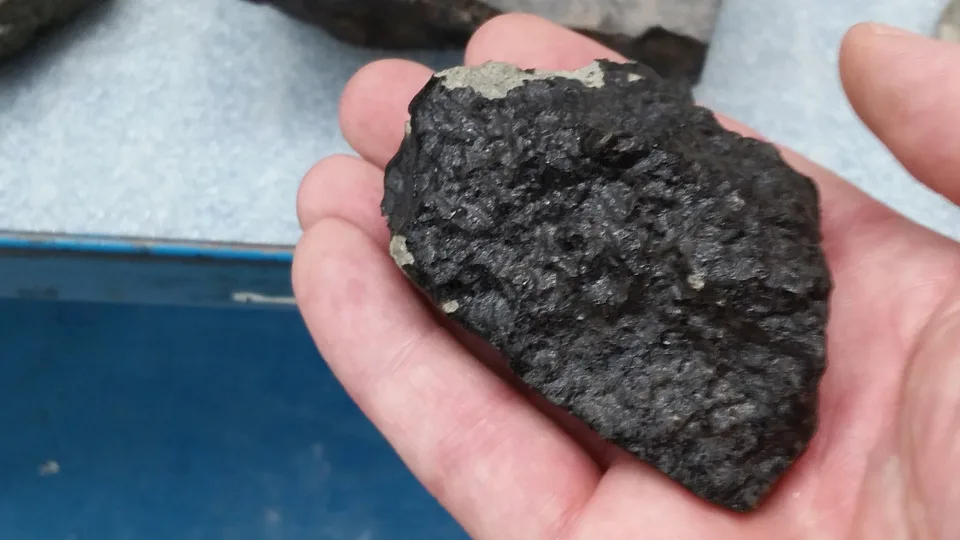
Got your hands on a space rock? Here's how to know for sure!
Think you may have stumbled upon a meteorite? This expert guide will help you know for sure!
A blaze of light flashed through the early morning darkness on Wednesday, July 24, flaring so brightly that, for just a few moments, night became like day.
Finding the object behind this brilliant display could reveal answers to mysteries about the birth of our solar system, or could provide us with even deeper questions to be answered.
Here's your guide to meteorites, and everything you need to know to identify them.
QUICK FACTS:
Rocks in space are known meteoroids (larger ones are usually called asteroids)
When a meteoroid enters the atmosphere, it produces a streak of light across the sky, called a meteor
Larger meteoroids produce a bright fireball, or can even explode as a bolide
Any piece of a meteoroid or asteroid that hits the ground is called a meteorite
There are three basic kinds of meteorites - iron, stony, and stony-iron
Most meteorites contain some of the earliest minerals to form in our solar system, over 4.5 billion years ago
Some meteorites are even from Mars or the Moon!
In general, the relationship between Earth and Space appears fairly tranquil.
We have a few prominent meteor showers each year, as well as several minor ones that may or may not be noticed, depending on the phase of the Moon and the local light pollution. Occasionally, there's an exceptionally bright meteor that flashes through our sky, and perhaps once a century, we witness something much bigger - such as the object that exploded over Chelyabinsk, Russia in February 2013.

The dawn sky over Chelyabinsk, Russia was lit up like full daylight on February 15, 2013, as this massive asteroid plunged into the atmosphere. The event was recorded by dashcam. Credit: Aleksandr Ivanov/Wikimedia Commons (CC BY 3.0)
In between these events, though, it doesn't seem like much happens.
Appearances can be deceiving, though.
Based on careful surveys, it is now estimated that, on any particular day, anywhere from 5 to 300 metric tons of cosmic rock and ice (aka meteoroids) plunge into Earth's atmosphere, all travelling at anywhere from 40,000 to 256,000 kilometres per hour when they hit the top of the atmosphere.
If we were able to capture a day's worth of accumulated meteoroids, before they flashed through the sky, we would find that most are microscopic dust grains and ice crystals. Mixed in with all of that microscopic matter would be some larger bits, and the larger the size, the fewer samples there'd be, with ones that get up over a metre in size being quite rare.
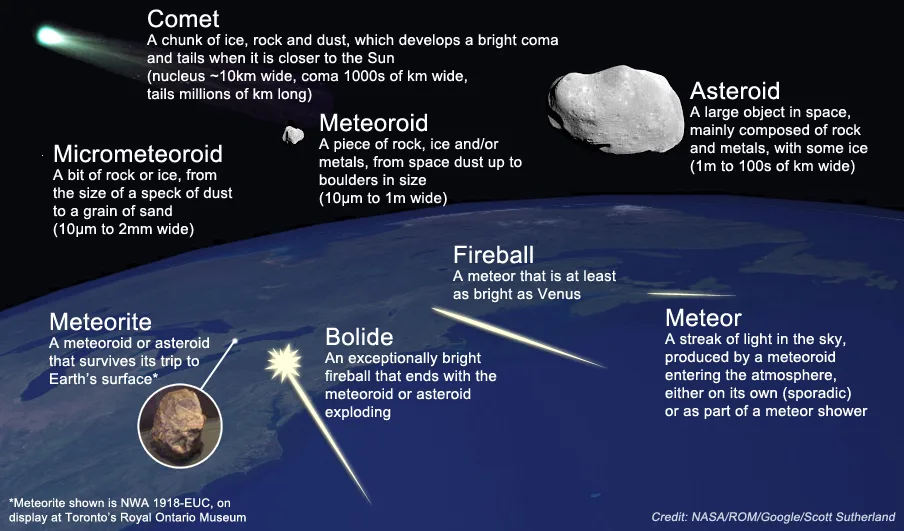
A primer on meteoroids, meteors and meteorites. Credits: Scott Sutherland/NASA JPL (Asteroids Ida & Dactyl)/NASA Earth Observatory (Blue Marble)
The smallest meteoroids go unnoticed as they enter the atmosphere. Although they're moving very fast, they are so small that they are either stopped immediately, or they vapourize without a trace. Some of the surviving dust can collect water vapour at very high altitudes, producing noctilucent clouds!
Larger grains survive longer, and produce streaks of light across the sky (aka meteors). This occurs as the bit of rock or ice compresses the air in its path, causing the air to heat up to the point where it glows. Many of these do not survive, as the intense heat of the air surrounding them eventually vapourizes them, as well.
Even larger meteoroids produce very bright meteors, which are called fireballs, or bolides if the meteoroid explodes, and these are the ones where pieces are likely to survive all the way to the ground, to become meteorites.
Watch below as Dr. Kim Tait, Curator of Mineralogy at the Royal Ontario Museum, talks about the three basic types of meteorites.
Here are some examples:
Iron:
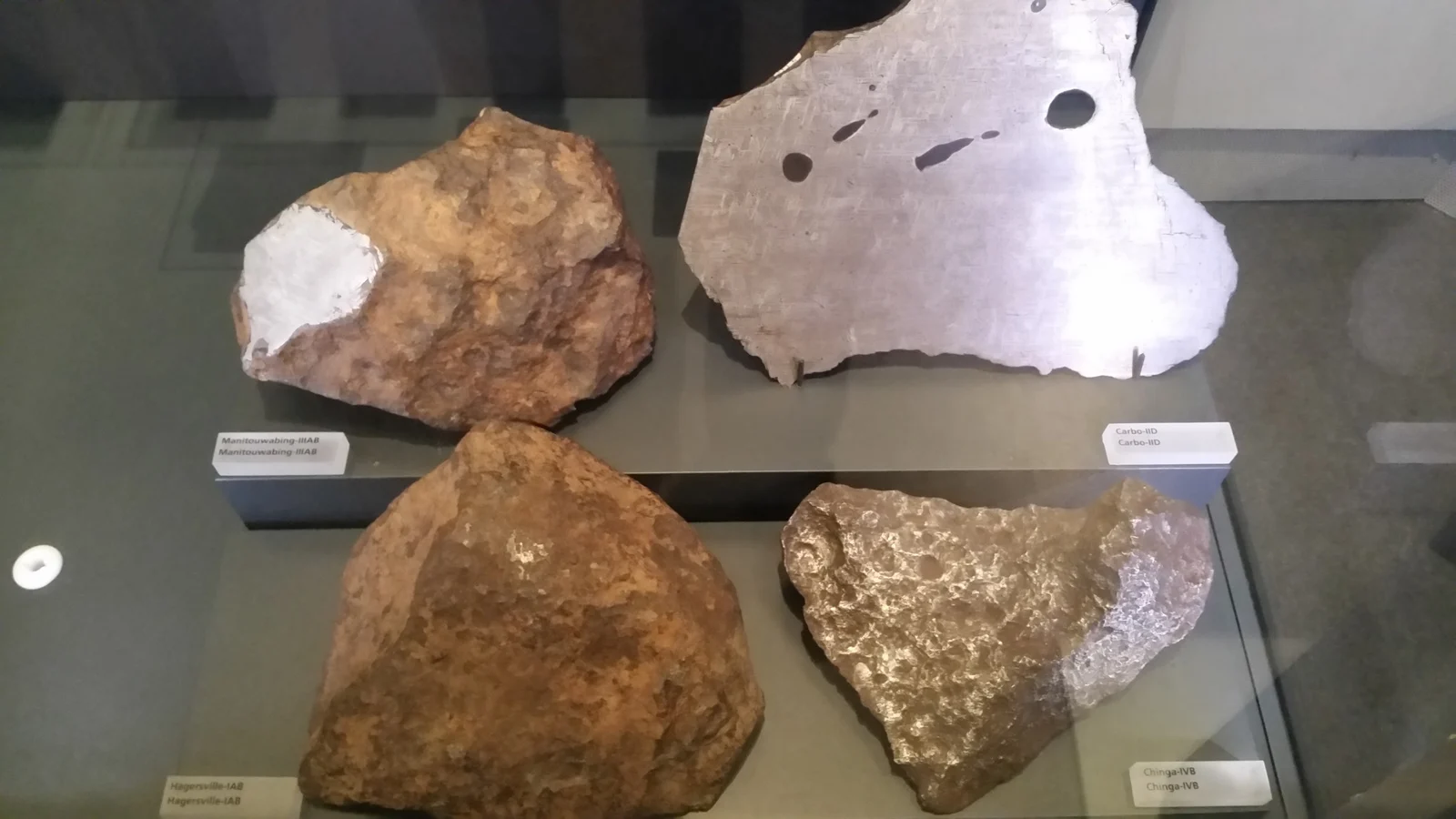
Stony:
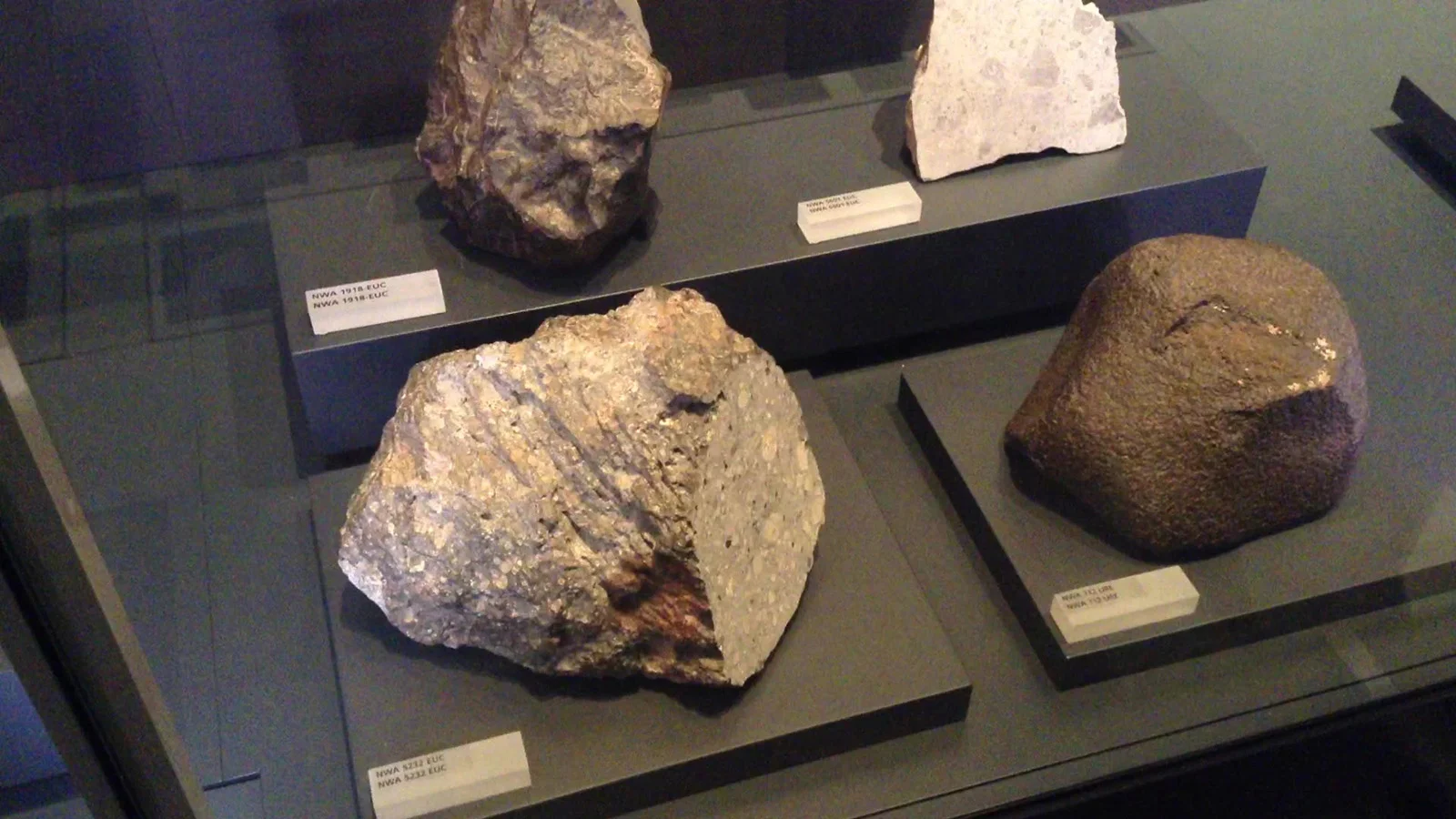
Stony-iron:
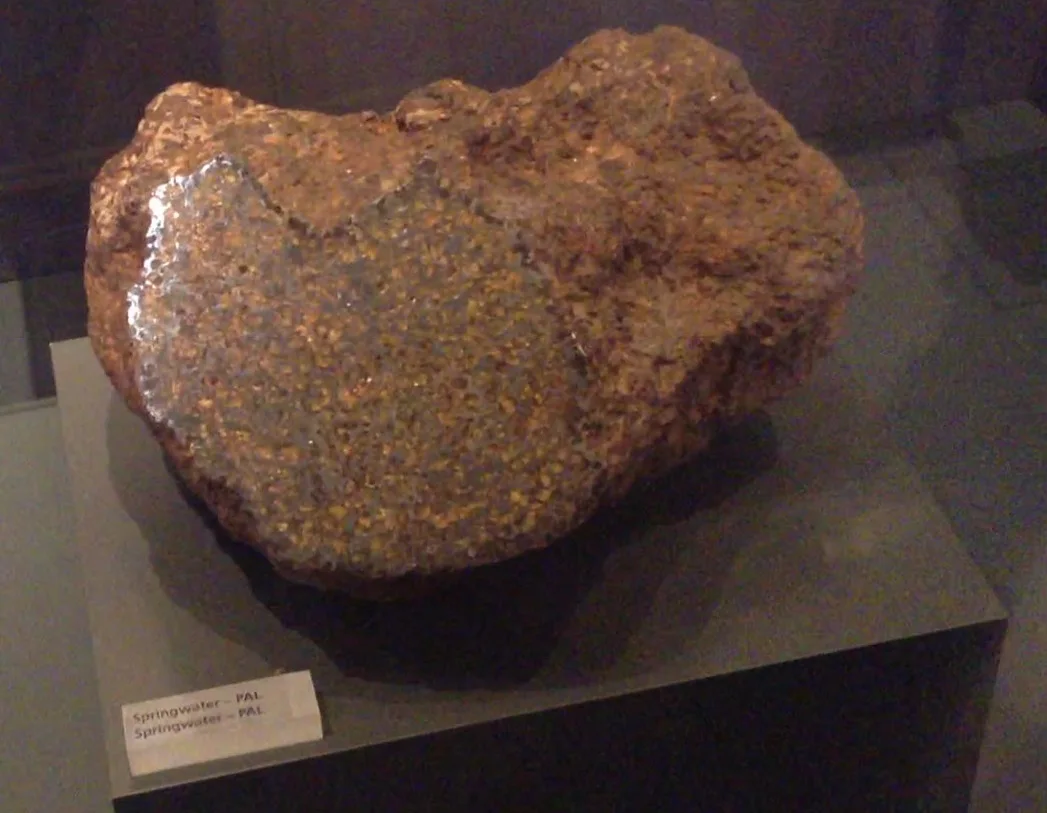
PIECES OF SOLAR SYSTEM HISTORY
Meteorites can tell us a lot about what went on in the early stages of our solar system, and even throughout its development, until the present day, and it's the stony ones that can tell us the most.
This is simply based on the crystals, granules and other components that make up each of these rocks, since many of them are virtually untouched since they were formed, over 4.5 billion years ago.
Royal Ontario Museum technician Ian Nicklin, below, relates just how much we can learn from one of these stony meteorites.
According to Nicklin, this large stony meteorite is a chondrite meteorite, named for the tiny, rounded mineral granules - known as chondrules - that surround the ancient calcium aluminum inclusions (CAI) he talks about here.
Nicklin says that there are likely many different processes that formed these chondrules, but invariably it involved the CAI crystals being flash heated to their melting point. In the zero-g environment of space, these molten minerals settled into rounded spheroid shapes and then quickly froze into that shape.
The meteoroid itself most likely formed over time as the chondrules and CAIs stuck together due to a combination of accumulated space dust, the gases in the space environment and the heat of these objects brushing up against one another as they jostled around in the inner solar system.
As simple conglomerations of these earliest minerals, chondrites are some of the most primitive objects in our solar system, and these represent the majority of meteorites found on Earth.
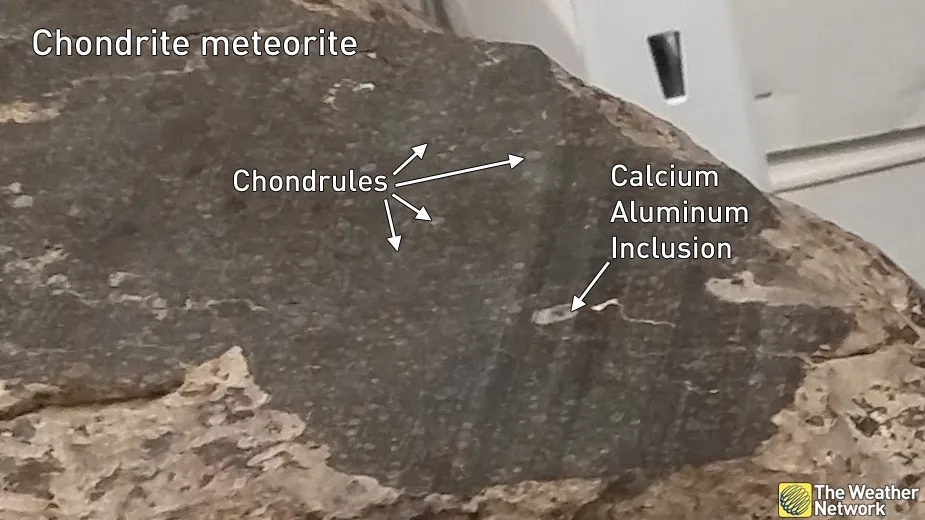

Less than 10 per cent of meteorites found are more evolved objects, known as achondrites. These were meteoroids that went through some kind of processing at an early point in their history - collisions, heating, melting - which melded all the chondrules together into a more uniform consistency, long before they came crashing down to Earth.
CHUNKS OF KNOWN OBJECTS
So, chondrites and achondrites represent some very primitive chunks of our solar system, but not all meteorites are.
Some were once part of much more evolved bodies, before they were were blasted into space, and eventually found their way to Earth's surface.
One of these meteorites, which Nicklin talks about, above, is very likely from a well-known object in our solar system - 4 Vesta, the second largest asteroid in the asteroid belt!
Of course, that's a very specific claim: that this particular olivine diogenite meteorite is from asteroid Vesta, as opposed to another of the thousands and thousands of asteroids and meteoroids that exist out in our solar system.
So, how can we be sure - even just reasonably sure - that this meteorite was once a part of Vesta?
The answer lies in light, or more specifically, comparing the light we receive from objects in space to light reflected off the surface of these meteorites in the lab. In this case, according to Nicklin, the laboratory spectral analysis of this meteorite matched very closely with the spectral analysis of 4 Vesta acquired by telescopes.
Thus, while it's possible that this meteorite could be from a different, but similar asteroid, all the evidence currently points to it originating from Vesta.
BITS OF OTHER PLANETS
So, these meteorites were all once meteoroids, or were part of a larger asteroid, but some meteorites were once part of much, much larger, and far more famous objects, as Nicklin discusses here.
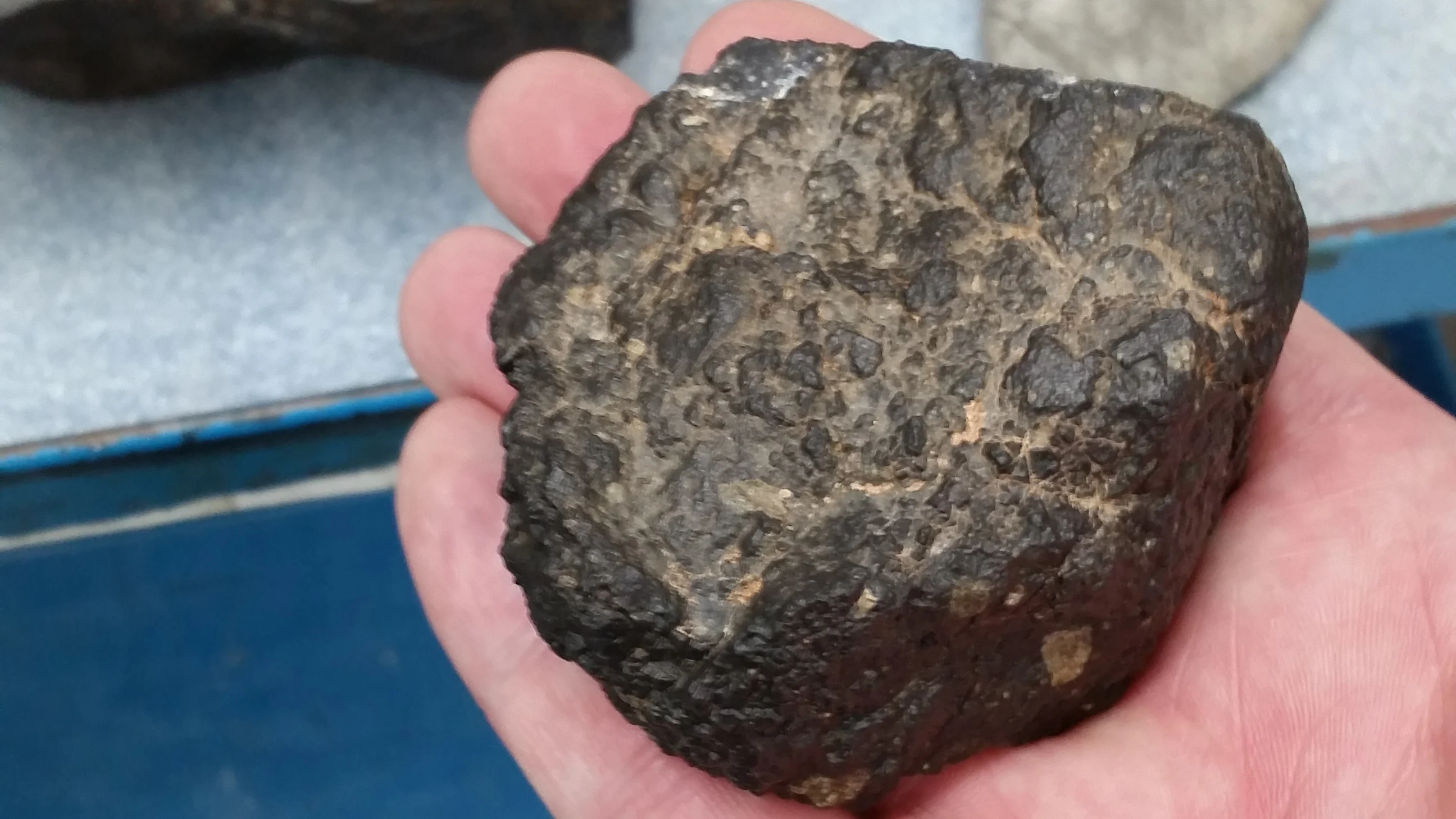
A Moon meteorite at the ROM.
The dark Tissint meteorite that he shows us is just one piece of a larger meteorite that fell to Earth in the Moroccan desert, exploding into multiple pieces in the process, on July 18, 2011.
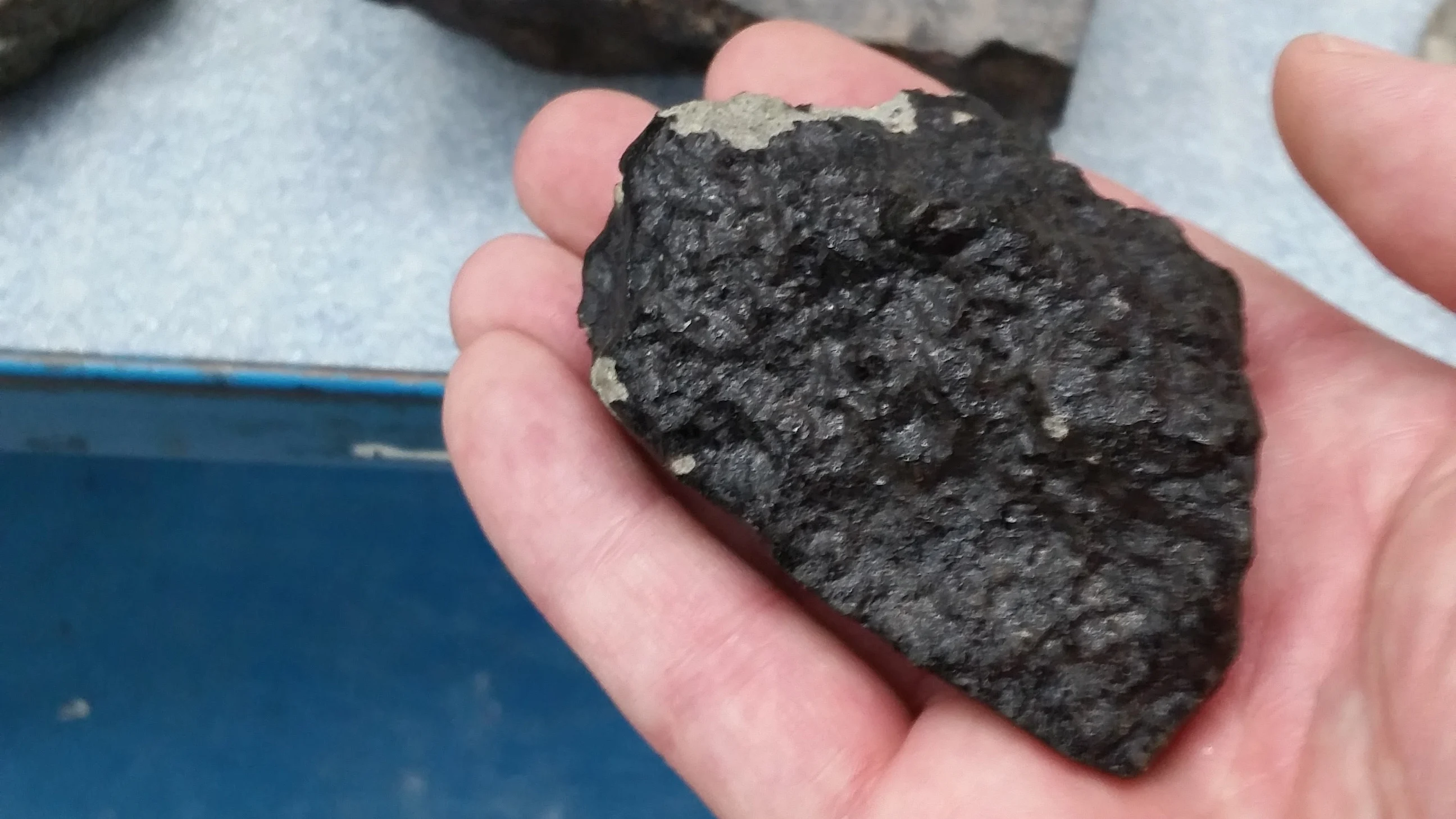
A piece of the Tissint Mars meteorite
Although Mars looks reddish orange to us in images, this is due to the oxidized dust ("rust dust") that covers nearly everything there. Wipe that dust off, as NASA's Curiosity rover has done, and you see the gray Martian basalt rock that is revealed beneath the Tissint meteorite's black fusion crust.
The Tissint meteorite is just one example of meteorites that contained extra clues about their origins, in the form of tiny bubbles locked away inside, as Nicklin explains below.
Although all meteorites are fascinating in their own right, and can hold important clues regarding the formation of our solar system, some are also exceptionally beautiful, such as these stony-iron "Pallasite" meteorites.
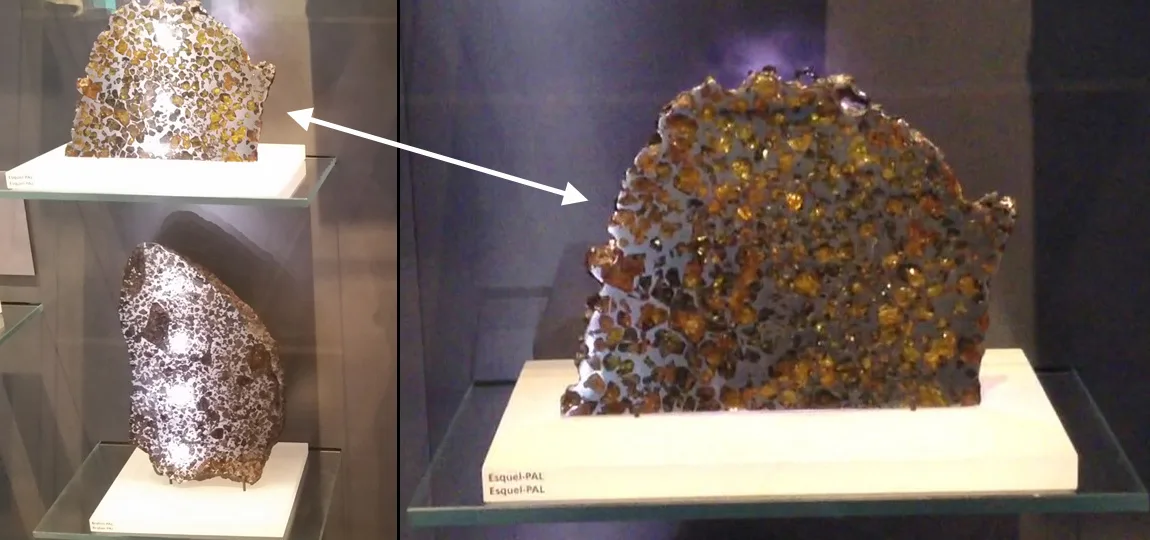
Pallasite meteorites on display in the Earth and Space collection of the Royal Ontario Museum, with a closeup view of the structure.
These meteorites are composed of olivine crystals, similar to the piece of 4 Vesta that Ian Nicklin discussed above, that are embedded in a larger mass of iron-nickel. These samples are even more impressive when they are sliced thin, as shown in closeup on the right, above, so that light can shine through the olivine.
HOW TO IDENTIFY A METEORITE
So, now that we know what the different kinds of meteorites are, and how they formed, how do we tell if we've actually found a meteorite?
Here's Dr. Tait with the details on what to look for.
For all the meteorites out there to be found, there are even more meteor-wrongs, which is the joking name for any rock that may have been thought to be a meteorite, but upon examination, turned out to be just a normal terrestrial rock.
What's the most common thing to be mistaken for a meteorite? It might not be what you think, as Dr. Tait explains here.
So, now that you've read about meteorites and learned about them from these amazing ROM scientists, what do you do if you've found an interesting rock, tested it, and you think that it really is a meteorite?
Bring it in to the experts, so that they can examine it!
The Royal Ontario Museum hosts Rock, Gem, Mineral, Fossil, and Meteorite Identification Clinics, for just this purpose!
In 2019, these are scheduled on February 20, April 17, June 19, August 21, October 16, December 11, from 4 to 5:30 pm, in the ROM's School Groups lunchroom, just inside the President’s Choice School Entrance (around the back, near the Museum Station entrance, on Queen's Park, south of Bloor St W).
UPDATE: THEY'VE HAD THEIR FIRST!
According to Dr. Tait, at the time when this article was first published, in 2016, of all the samples that people had brought in to the ROM as suspected meteorites, not one had actually turned out to be a true meteorite.
While some people have brought in rocks they had purchased, to verify that they were, in fact, meteorites, any samples brought in that had simply been found, all turned out to be meteor-wrongs.
As of 2018, however, they had their very first true meteorite brought in to an Identification Clinic!
This is the Wood River meteorite. It was brought in by someone from Saskatchewan, whose grandfather had picked up the somewhat unusual looking stone, according to Ian Nicklin.
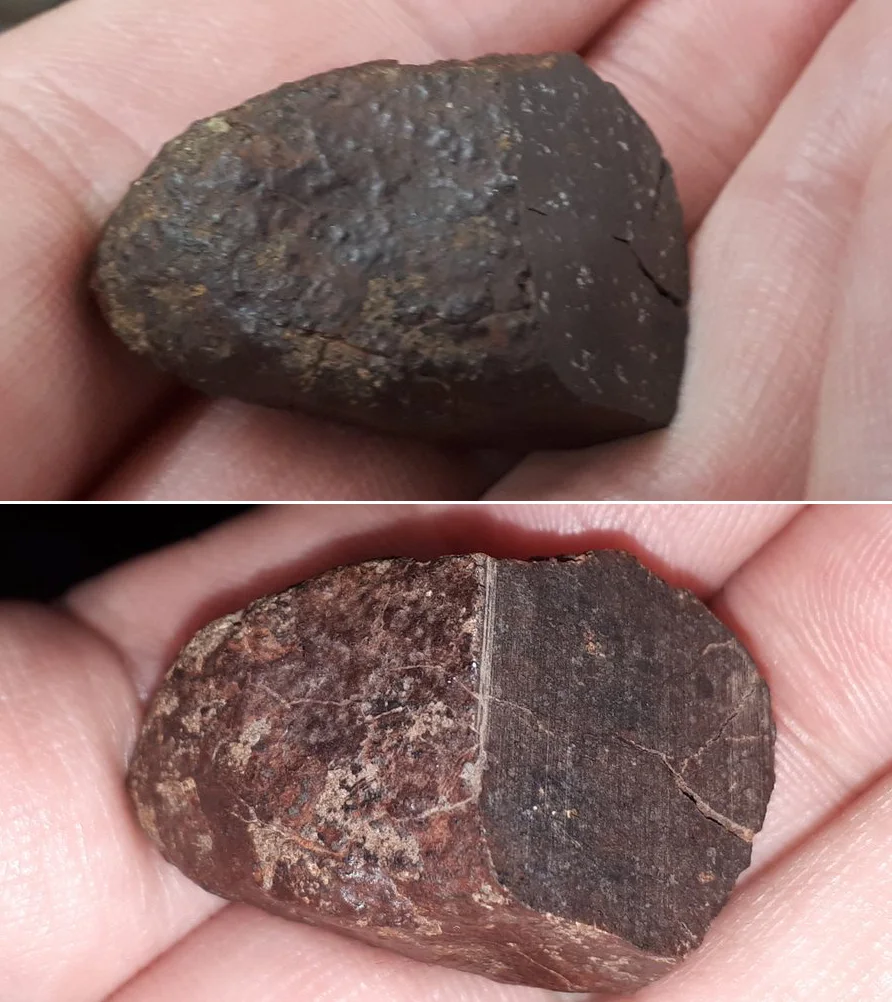
The Wood River Meteorite, at the Royal Ontario Museum, imaged without camera flash (above) and with the flash (below). Credit: Scott Sutherland
As this shows, it doesn't take being a professional to find meteorites (although it can help)!
So, be curious! Check out the interesting rocks that you see around you outside! Test them against what you've learned here, and if you think you've found something, bring it to an expert for confirmation!











